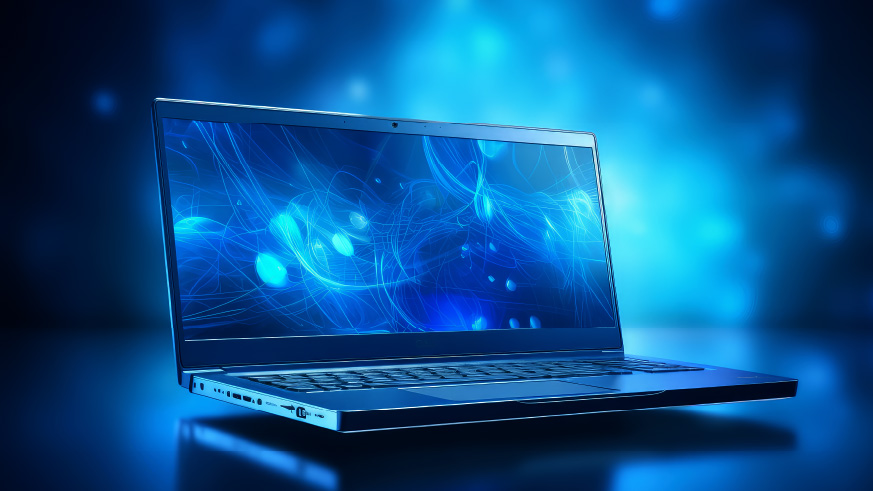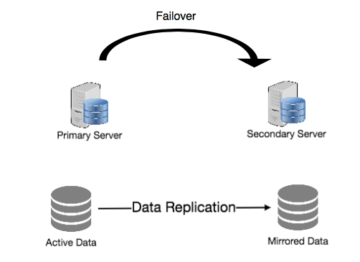Introduction
In life, we require harmonizing elements that complement each other’s existence. You might have heard that Life is the rider, and time is the ride. Together, they create the journey we call existence. Similarly, if you are in AI and analytics, you need the best mentor, environment, and workstation to excel. You must work hard to find the best mentor and environment, but we are at your convenience to find your best workstation.
Do you know the AI market size is projected to reach US$305.90 billion in 2024? Development and innovation in AI are going haywire. A good workstation is crucial if you are new to this field or planning to start your career. In this journey, you will need to run transformers with billions of parameters and complex algorithms with software tools, and opting for the best laptop is a must. In this article, we have curated a list of 10 Laptops that can be your partner with great precision.

Table of contents
Factors to Consider Before Buying Laptop to Process Large Datasets
When it comes to laptops for AI and data science work, there are several important factors to consider beyond just raw specs. Here’s a fresh analysis of choosing the right laptop for these demanding workloads:
- Processor Performance
The CPU is the laptop’s brain, and AI/ML workloads are highly parallelized, benefiting greatly from more cores/threads. For CPU-bound tasks, look for laptops with high-core-count CPUs like Intel Core i9 or AMD Ryzen 9 processors with 8+ cores and 16+ threads. Apple’s M1 Pro/Max chips with up to 10 CPU cores also offer impressive performance per watt. - Memory Capacity
Having ample RAM is critical when working with large datasets. 16GB is the minimum recommended, but professionals should target 32GB or more for flexibility with multiple applications and datasets. ECC memory adds error correction for enhanced reliability in mobile workstations like the Lenovo ThinkPad P Series. - Graphics Acceleration
While not mandatory for all AI tasks, a discrete GPU can greatly accelerate machine learning model training and inference. Nvidia’s RTX GPUs with tensor cores excel at these parallel workloads. The RTX A5000 mobile is the most powerful option, but even mid-range GPUs like the RTX 3070 provide a big boost over integrated graphics. - Display Quality
A high-resolution display with a wide color gamut and accuracy for data visualization and model evaluation becomes important. Options like 4K OLED, DreamColor, or P3 wide gamut displays make colors and details pop compared to basic 1080p panels. - Portability vs Performance
There’s often a trade-off between extreme performance and ultraportability. Slimline ultrabooks sacrifice GPU power, while mobile workstations offer the full grunt but are heavier. The ideal is finding the right balance based on whether you prioritize performance or extreme portability. - Battery Life
Given the power demands of AI workflows, don’t expect great battery life even from high-end laptops under load. However, models with large batteries and efficient CPUs/GPUs can still provide all-day mobility for lighter duties.
The ideal laptop tailors the components to your specific AI/ML use cases and budget. Options like the Lenovo ThinkPad P1, Dell Precision 5000 series, and higher-end MacBook Pros cover the performance bases well.
Best Laptops for AI and Analytics Workloads in 2024
Apple 14 and 16-inch MacBook Pro

Very suitable for AI/ML work with the powerful M1 Pro/Max chips and unified memory architecture. Up to 64GB RAM and machine learning acceleration.
Apple’s high-end pro laptops with M1 Pro/Max chips
Apple 14-inch MacBook Pro
- 10-core CPU with 6 performance cores and 4 efficiency cores,
- A 12-core CPU with 8 performance cores and 4 efficiency cores
- 16-core GPU,19-core GPU
- 16-core Neural Engine
- 200GB/s memory bandwidth
- Mac, 16GB RAM, 512GB SSD, Apple M1 Pro 8 Core, Space Grey, 14 inch
- 3.5 lbs, 0.61 inches thin
- Ports include HDMI, Thunderbolt 4, SDXC card slot
Apple 16-inch MacBook Pro
- 12-core CPU with 6 performance cores and 6 efficiency cores
- 18-core GPU Hardware-accelerated ray tracing
- 16-core Neural Engine
- 150GB/s memory bandwidth
- Mac, 16GB RAM, 1TB SSD, Apple M1 Pro 10 Core, Silver, 16 inch
- 4.7 lbs, 0.66 inches thin
- Ports include HDMI, Thunderbolt 4, SDXC card slot
Know more about Apple 14 and 16-inch MacBook Pro: Click Here
HP ZBook Studio G5 Mobile Workstation

An excellent mobile workstation perfectly suited for AI/ML work with Xeon/Core i9 CPUs, ECC RAM, pro Quadro/Radeon GPUs.
Intel Core i5-8300H
- 2.3 GHz base frequency (up to 4.0 GHz maximum Turbo Boost frequency)
- 2666 MHz, 8 MB cache, and 4 Cores
- 45 WIntel UHD Graphics 630
- Intel UHD graphics 630 (configurable as a standalone graphics option)
- Intel UHD graphics P630 (only used when NVIDIA Optimus Technology is enabled)
- 39.62 cm (15.6 in) diagonal FHD IPS eDP, LED-backlit, anti-glare, 400 nits (1920 x 1080)
- 39.62 cm (15.6 in) diagonal FHD IPS eDP with Panel Self Refresh (PSR), LED-backlit, anti-glare, 400 nits with an ambient light sensor (1920 x 1080)
- HP DreamColor Display 39.62 cm (15.6 in) diagonal UHD IPS eDP with Panel Self Refresh (PSR), anti-glare, RG phosphors and LED backlit, 600 nits 100% Adobe RGB with 10-bit color (3840 x 2160)
- HP Sure View Display 39.62 cm (15.6 in) diagonal FHD IPS eDP with Panel Self Refresh (PSR), LED-backlit, 650 nits (1920 x 1080)
Know more about Intel Core i5-8300H – Click here.
HP Spectre x360 16

A very capable HP Spectre x360 Laptop, equipped with AI-enhanced intelligence capabilities, is crafted to handle diverse tasks seamlessly. It operates on the Intel® Evo™ platform and is driven by the formidable 12th Gen Intel® Core™ i7 processor.
- 12th Gen Intel® Evo™ platform Powered by Core™ i7 Processor
- Windows 11 Home
- 34.3 cm (13.5) diagonal 3K2K (3000 x 2000),
- OLED touchscreen display with Intel® Iris® Xᵉ Graphics
- 16 GB LPDDR4x
- 512 GB SSD Solid State Drive
- Backlit Keyboard, Fingerprint Reader, True Vision 5MP IR camera, B&O Speakers
Know more about HP Spectre x360 16 – Click Here
Lenovo ThinkPad P1 Mobile Workstation

This is an excellent mobile workstation suitable for AI/data work. It has Xeon/Core i9 CPUs, ECC RAM, and Quadro RTX graphics. It is durable and has lots of ports.
- 13th Generation Intel® Core™ i7-13700H Processor (E-cores up to 3.70 GHz P-cores up to 5.00 GHz)
- NVIDIA RTX™ A1000 Laptop GPU 6GB GDDR6
- 8 GB DDR5-5600MHz (SODIMM)
- 256 GB SSD M.2 2280 PCIe Gen4 TLC Opal
- 40.64cms (16) WUXGA (1920 x 1200), IPS, Anti-Glare, Non-Touch, 100%sRGB, 300 nits, 60Hz, Low Blue Light
Know more about Lenovo Thinkpad: Click here
Microsoft Surface Book 3

A premium versatile 2-in-1 suitable for AI engineers with Core i7 CPU, discrete GTX 1660 Ti GPU, and detachable tablet mode.
Premium detachable 2-in-1 laptop
- Surface Book 3 13.5”
- Quad-core 10th Gen Intel® Core™ i5-1035G7 Processor
- Quad-core 10th Gen Intel® Core™ i7-1065G7 Processor
- Surface Book 3 15”
- Quad-core 10th Gen Intel® Core™ i7-1065G7 Processor
- Surface Laptop 3 13.5”
- Quad-core 10th Gen Intel® Core™ i5-1035G7 Processor
- Quad-core 10th Gen Intel® Core™ i7-1065G7 Processor
- Surface Laptop 3 15”
- AMD Ryzen™ 5 3580U Mobile Processor with Radeon™ Vega 9 Graphics Microsoft Surface® Edition
- AMD Ryzen™ 7 3780U Mobile Processor with Radeon™ RX Vega 11 Graphics Microsoft Surface® Edition
Know more about Microsoft Surface Book 3: Click here.
Alienware m15 R2 Gaming Laptop

This powerful gaming laptop can decently handle AI workloads with a Core i9 and RTX 2080 Max-Q GPU, though portability may be an issue.
- 15.6″ gaming laptop with up to 4K OLED display
- 2.4GHz Intel Core i9-9980HK 9th Gen processor
- 15.6-inch screen, NVIDIA 2080 8GB Graphics
- Up to 32GB DDR4 RAM and 1TB SSD
- Alienware cooling with dual intakes
Know more about Alienware m15 R2 Gaming Laptop: Click here.
Acer Aspire E 15

An affordable laptop with basic specs and integrated graphics is inadequate for demanding AI tasks. It is okay for light data analysis.
- Up to 7th gen Core i3/i5 CPUs 7200U
- 2.5 GHz with Turbo Boost Upto 3.1 GHz
- Up to 8GB DDR4 RAM and 1TB HDD
- Full HD widescreen LED display
- HDMI, USB 3.0, DVD writer
Know more about Acer Aspire E 15: Click here.
ASUS VivoBook S15

An affordable ultrabook is less suitable for intensive AI work, as it tops out at an MX250 GPU and 16GB RAM. Okay, for lighter data analysis tasks.
- 12th Gen Intel EVO Core i5-12500H, 2.5 GHz Base Speed, 18MB Cache, Up to 4.5 GHz Max Turbo Speed, 12 Cores ( 4P+8E ), 16 Threads
- 16GB (8GB onboard + 8GB SO-DIMM) DDR4 3200MHz with | Storage: 512GB M.2 NVMe PCIe 4.0 SSD
- 15.6-inch (39.62 cms), FHD (1920 x 1080) OLED 16:9 aspect ratio, 0.2ms response time, 600nits peak brightness, Anti-glare display, 100% DCI-P3 color gamut, Screen-to-body ratio: 84%, VESA CERTIFIED Display HDR True Black 600, PANTONE Validated.
- Integrated Intel Iris Xe Graphics
- Pre-loaded Windows 11 Home with lifetime validity | Software Included: Pre-Installed Office Home and Student 2021 | 1-Year McAfee Anti-Virus
Know more about ASUS VivoBook S15: Click here.
Razer Blade Stealth 13 Ultrabook

It is ultraportable but very underpowered for AI workflows. With integrated graphics and a 16GB RAM limit, it is best for basic office/coding use.
- Ultra-portable CNC aluminum 13.3″ Laptop
- Thunderbolt 3 capable, compatible with Razer Core x External GPU enclosures
- Intel Core i7-1065G7 4 core processor with 1. 3GHz/3. 9GHz (base/max turbo),
- NVIDIA GeForce GTX 1650 Max-Q, 13.3″ FHD 60Hz matte display,
- 16GB RAM, 512GB SSD
- Up to 4K touch display
- Thunderbolt 3, USB-C, headphone jack
Know more about Razer Blade Stealth 13 Ultrabook: Click here.
Dell XPS 13

It is a premium compact laptop with a Core i7 CPU to handle some lighter AI/data task.
- 12th Gen Intel® Core™ i7-1250U (12 MB cache, 10 cores, up to 4.70 GHz Turbo)
- 16 GB: LPDDR5, 5200 MT/s (onboard), dual-channel
- 32 GB: LPDDR5, 5200 MT/s (onboard), dual-channel
- 512 GB, PCIe x2 NVMe, SSD integrated
- 1 TB, PCIe x2 NVMe, SSD integrated
Know more about Dell XPS 13: Click here.
ASUS Rog Zephyrus G15

The powerful AMD Ryzen 9 processor and up to 48GB of RAM provide ample computing performance to train and run machine learning models efficiently. With support for up to an NVIDIA RTX 3080 GPU, this laptop can leverage hardware acceleration for deep learning workloads requiring high parallelism across thousands of cores.
- AMD Ryzen 7 6800HS Mobile Processor (8-core/16-thread, 20MB cache, up to 4.7 GHz max boost)
- 16GB (8GB onboard + 8GB SO-DIMM) DDR5 4800MHz Support up to 40GB with | Storage: 1TB PCIe 4.0 NVMe M.2 SSD with additional empty 1x M.2 Slot for a storage upgrade
- NVIDIA GeForce RTX 3060 GPU GDDR6 6GB VRAM with MUX Switch + Optimus, ROG Boost: 1475MHz* at 120W (1425MHz Boost Clock+50MHz OC, 100W+20W Dynamic Boost)
Know more about ASUS Rog Zephyrus G15: Click here.
Conclusion
Moreover, the hardware requirements can vary significantly depending on your specific needs. You may require a system with higher RAM capacity and powerful GPUs for efficient processing when working with extensive datasets.
However, a modest laptop like my Lenovo Legion Y545 with 16GB of RAM and an i7 processor can suffice for more basic tasks. Thanks to its capable hardware specifications, the Lenovo Legion Y545 is a powerful gaming laptop that can also handle machine learning and AI applications reasonably well.
For computationally intensive operations, I leverage cloud-based platforms such as Google Colab, IBM Watson Studio, or Azure ML, which provide free access to robust computing resources. This approach allows me to utilize industry-leading capabilities without the need for substantial upfront investment in high-end hardware.
If you plan to purchase a powerful laptop, consider models equipped with NVIDIA GPUs. These GPUs are well-suited for resource-intensive applications and can enhance overall productivity.
I hope this article helped you understand the best laptops for Handling AI and Analytics Workloads in 2024. If you like this article, comment below.
- SEO Powered Content & PR Distribution. Get Amplified Today.
- PlatoData.Network Vertical Generative Ai. Empower Yourself. Access Here.
- PlatoAiStream. Web3 Intelligence. Knowledge Amplified. Access Here.
- PlatoESG. Carbon, CleanTech, Energy, Environment, Solar, Waste Management. Access Here.
- PlatoHealth. Biotech and Clinical Trials Intelligence. Access Here.
- Source: https://www.analyticsvidhya.com/blog/2024/04/best-laptops-that-can-handle-ai-and-analytics-workloads/
- :has
- :is
- :not
- ][p
- $UP
- 00
- 1
- 10
- 10th
- 11
- 12
- 12th
- 13
- 14
- 15%
- 16
- 1650
- 1800
- 1TB
- 2%
- 2000
- 2021
- 2024
- 300
- 3000
- 375
- 39
- 4
- 400
- 4k
- 5
- 500
- 5000
- 515
- 6
- 62
- 66
- 7
- 70
- 700
- 725
- 7th
- 8
- 9
- 90
- 9th
- a
- About
- accelerate
- acceleration
- access
- accuracy
- acer
- across
- Additional
- Adds
- Adobe
- affordable
- AI
- AI/ML
- algorithms
- Alienware
- All
- allows
- also
- Amazon
- Ambient
- AMD
- an
- analysis
- analytics
- and
- Apple
- applications
- approach
- architecture
- ARE
- article
- AS
- aspect
- aspire
- Asus
- At
- Balance
- base
- based
- basic
- batteries
- battery
- Battery life
- BE
- becomes
- before
- below
- benefiting
- BEST
- between
- Beyond
- Big
- Billion
- billions
- Black
- BLADE
- Blue
- book
- boost
- Brain
- budget
- but
- Buying
- by
- cache
- call
- camera
- CAN
- capabilities
- capable
- Capacity
- card
- Career
- Certified
- Chips
- choosing
- Cms
- color
- comes
- comment
- compact
- compared
- compatible
- Complement
- complex
- components
- computationally
- computing
- Consider
- convenience
- Core
- cover
- CPU
- crafted
- create
- critical
- crucial
- curated
- data
- data analysis
- data science
- data visualization
- datasets
- deep
- deep learning
- Dell
- demanding
- demands
- Depending
- details
- Development
- discrete
- Display
- displays
- diverse
- Dont
- driven
- dual
- DVD
- dynamic
- e
- each
- ecc
- efficiency
- efficient
- efficiently
- elements
- empty
- enabled
- Engineers
- enhance
- enhanced
- Environment
- equipped
- error
- evaluation
- Even
- Excel
- excellent
- existence
- expect
- extensive
- external
- extreme
- factors
- field
- Find
- finding
- fingerprint
- Flexibility
- FLIPKART
- For
- formidable
- Free
- Frequency
- fresh
- from
- full
- gaming
- gamut
- GeForce RTX 3060
- Gen
- generation
- going
- good
- GPU
- GPUs
- graphics
- great
- greatly
- GTX 1660 Ti
- handle
- Handling
- Hard
- Hardware
- Have
- HDR
- heard
- helped
- here
- High
- High-End
- high-resolution
- higher
- highly
- Home
- hope
- However
- HP
- HTTPS
- i
- IBM
- IBM Watson
- ideal
- if
- important
- impressive
- in
- inches
- include
- included
- industry-leading
- Innovation
- integrated
- Intel
- Intel Core
- Intelligence
- intensive
- investment
- iris
- issue
- IT
- ITS
- journey
- jpg
- just
- keyboard
- Know
- laptop
- laptops
- large
- learning
- Led
- legion
- Lenovo
- less
- Leverage
- Life
- lifetime
- light
- lighter
- like
- LIMIT
- List
- load
- Look
- lots
- Low
- macbook
- machine
- machine learning
- make
- mandatory
- Market
- max
- max-width
- maximum
- May..
- Mcafee
- me
- Memory
- mentor
- Microsoft
- might
- minimum
- Mobile
- mobility
- Mode
- model
- models
- modest
- more
- most
- multiple
- must
- my
- Need
- needs
- Neural
- New
- Nvidia
- of
- offer
- Office
- often
- Okay
- Oled
- on
- Onboard
- only
- operates
- Operations
- opting
- Option
- Options
- or
- out
- over
- overall
- panel
- panels
- Parallel
- parameters
- partner
- Peak
- per
- perfectly
- performance
- plan
- planning
- platform
- Platforms
- plato
- Plato Data Intelligence
- PlatoData
- pop
- portability
- ports
- power
- powered
- powerful
- Precision
- Premium
- Prioritize
- Pro
- process
- processing
- Processor
- processors
- productivity
- professionals
- projected
- PROS
- provide
- PSR
- purchase
- quality
- r2
- RAM
- ratio
- Raw
- RAY
- razer
- reach
- Reader
- recommended
- reliability
- require
- Requirements
- resource-intensive
- Resources
- response
- RGB
- Ride
- right
- robust
- ROG
- rtx
- RTX 3060
- RTX 3080
- Run
- running
- RX
- sacrifice
- Science
- Screen
- seamlessly
- SELF
- Series
- several
- should
- significantly
- Silver
- Similarly
- Size
- slot
- Software
- solid
- some
- Space
- specific
- specifications
- specs
- Spectre
- speed
- standalone
- start
- State
- Stealth
- Still
- storage
- Student
- studio
- substantial
- such
- suitable
- suited
- support
- sure
- Surface
- Switch
- system
- Tablet
- Target
- Task
- tasks
- Technology
- thanks
- that
- The
- There.
- These
- they
- this
- though?
- thousands
- time
- to
- together
- tools
- Tops
- touch
- Touchscreen
- Train
- Training
- transformers
- true
- under
- understand
- unified
- usb
- USB-C
- use
- used
- utilize
- validated
- validity
- vary
- versatile
- very
- View
- vision
- visualization
- vs
- Watson
- Watson Studio
- we
- WELL
- when
- whether
- which
- while
- wide
- will
- windows
- windows 11
- with
- without
- Work
- workflows
- working
- workstation
- X
- you
- Your
- zephyrnet








